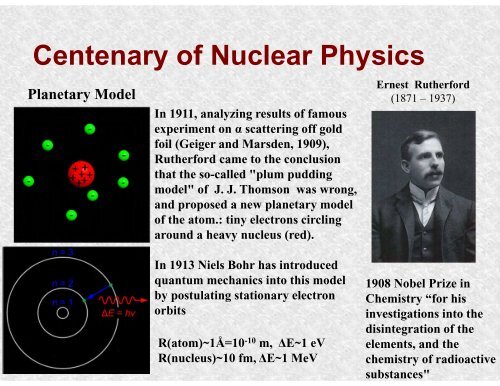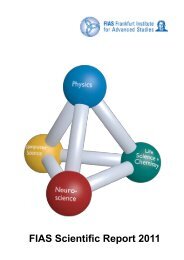Nuclear Fragmentation Reactions from Research to Applications
Nuclear Fragmentation Reactions from Research to Applications
Nuclear Fragmentation Reactions from Research to Applications
You also want an ePaper? Increase the reach of your titles
YUMPU automatically turns print PDFs into web optimized ePapers that Google loves.
Centenary of <strong>Nuclear</strong> Physics<br />
Planetary Model<br />
In 1911, analyzing results of famous<br />
experiment on α scattering off gold<br />
foil (Geiger and Marsden, 1909),<br />
Rutherford came <strong>to</strong> the conclusion<br />
that the so-called "plum pudding<br />
model" of J. J. Thomson was wrong,<br />
and proposed a new planetary model<br />
of the a<strong>to</strong>m.: tiny electrons circling<br />
around a heavy nucleus (red).<br />
In 1913 Niels Bohr has introduced<br />
quantum mechanics in<strong>to</strong> this model<br />
by postulating stationary electron<br />
orbits<br />
R(a<strong>to</strong>m)~1Å=10 -10 m, ΔE~1 eV<br />
R(nucleus)~10 fm, ΔE~1 MeV<br />
Ernest Rutherford<br />
(1871 – 1937)<br />
1908 Nobel Prize in<br />
Chemistry “for his<br />
investigations in<strong>to</strong> the<br />
disintegration of the<br />
elements, and the<br />
chemistry of radioactive<br />
substances"
















